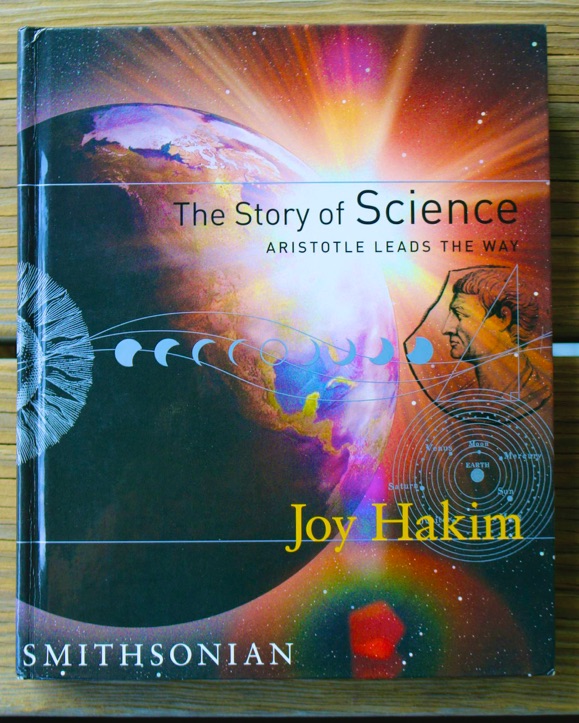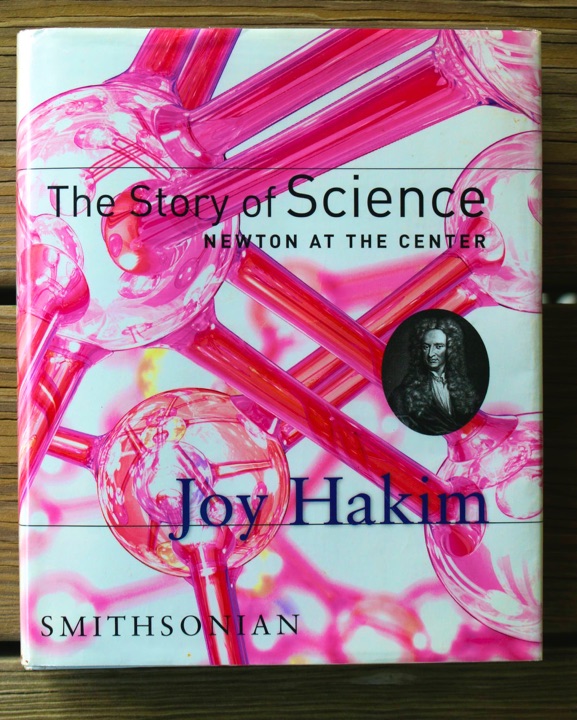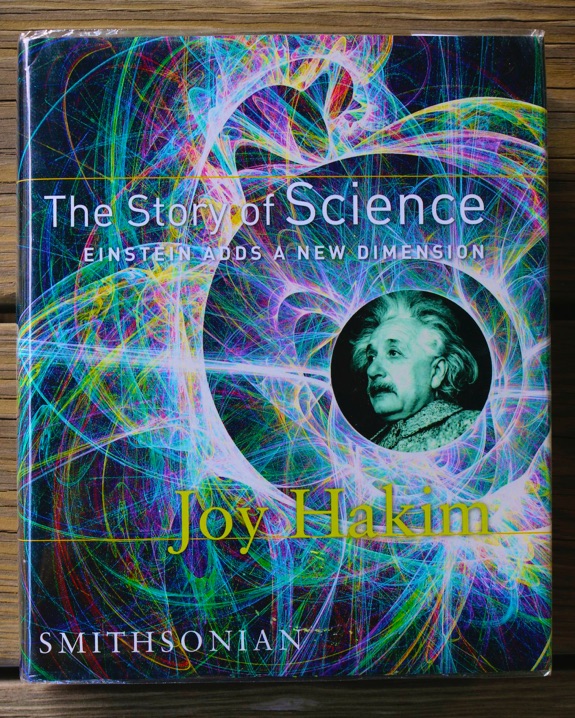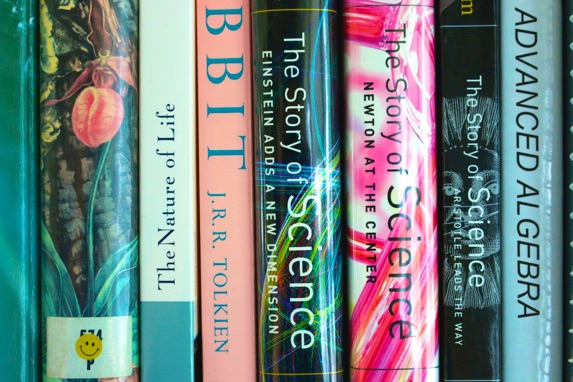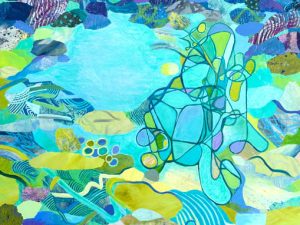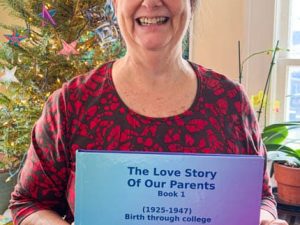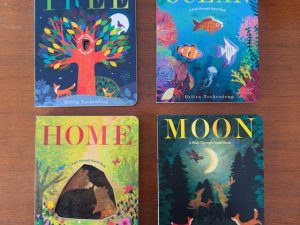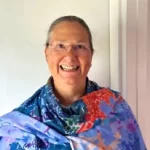
–
I can’t say enough good things about this science series written by Joy Hakim that was designed for middle schoolers. I read it aloud twice, to two different kids who enjoyed it, and I loved it as much as they did, both times.
This is basically a history of science from the early beginnings until 2007, but it is fleshed out with stories of the people involved as well as the concepts explained. There are lots of quotes, sidebar explanations, photographs, illustrations, timelines, and trivia details. Each time, we went through it at a slow pace, sequentially, over a long period as a homeschooling project, sometimes reading further on topics of interest. When reading, we often interrupted ourselves mid chapter on a detour of interesting conversation, all sparked by the material at hand. The chats prompted by these books on subjects ranging from science, human nature, motives, individual challenges, or qualities of character, will remain one of my favorite reminiscences of homeschooling.
Recently, some people have asked me how it happened that our homeschooling daughter is so interested in science. Homeschoolers don’t often end up enthused about science; often it is the weakest link in a homeschooling education. This daughter was preoccupied with nature and earth science in her early years, but since she was so excellent in art, it was expected that she would choose to pursue that professionally instead.
However, then we read these books as a supplement to her standard early high school science coursework, reserved for lazier low key days on the couch, porch, or picnic table together. The real take away– beside understanding the whole intricate sweep not only of what we know but how we came to know it– was that there is still stuff to discover, questions we still need answers to, and a genuine glimpse was caught as to how exciting it would be to be a part of this larger trajectory. So she was active on her robotics team, went to MIT Splash every year taking Physics classes, took a college level Astronomy class in high school, and now is headed off to college to study Physics in order to –with such glee!– stand on the shoulders of all those we read about in these books.
And what about her older brother who I read these books to in 6th and 7th grade? Today he started a paid summer internship at an engineering design firm, and next year he will finish an engineering degree at Swarthmore. These books were foundational for his life too.
So buy this series and read them with someone you love, or buy them as a gift for a curious young teen, or weave them into your homeschooling life, or simply get them to educate yourself, one bit of information at a time. The science in them is sound, vetted by cutting edge MIT professors, but the language is engaging, accessible, and yes, even fun if you are nerdy enough. I give these solid, enlightening, thoroughly eye-opening books a wildly enthusiastic 5 stars. They are shown in order below, and I owe a huge debt of gratitude to their author.
–
